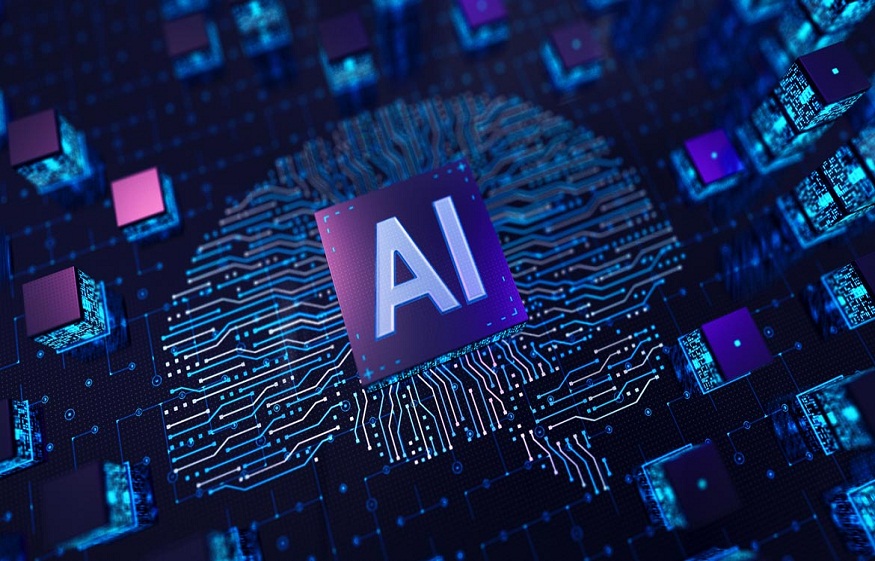Like a ravenous student who has ingested millions of books, pictures, and sounds, generative AI is revolutionizing the way we produce and engage with digital material. These algorithms are able to generate unique content from basic text prompts by examining large amounts of data. They are effective creative aids, but they cannot take the place of human judgment and creativity. Rather, they’re bringing in a new era of agentic AI technology, where human understanding and computing power combine to unleash previously unheard-of creative potential.
1. The Magic Behind Generative AI: It’s All About Learning Patterns
Consider having a buddy who has listened to music for hours on end, read millions of books, and viewed innumerable photographs. Generative AI basically accomplishes that—it finds patterns in enormous volumes of data. These AI systems learn to generate by analyzing pre-existing information, just the way a kid learns to talk by listening to others. They dissect this information into small chunks, comprehending how musical notes flow together, how colors mix in pictures, or how words follow one another. They utilize these acquired patterns to produce original material when you ask them to do so. Giving children a starting point is similar to that; they will use what they have learnt to create something unique, whether it is a tale, a picture, or even a piece of music.
2. The Human Touch Still Matters
It’s crucial to keep in mind that, despite all the hype surrounding generative AI, these technologies are more like advanced assistants than they are substitutes for human creativity. Consider them to be extremely intelligent paint brushes that may assist in producing stunning artwork, but they still require the guidance along with vision of an artist. Although these systems are capable of producing ideas and information at astonishingly high speeds, they are devoid of the profound comprehension, emotional intelligence, and life experiences that distinguish human creativity. They are unable to comprehend the cultural relevance of an artwork or sense the emotional weight of a tale. Therefore, generative AI works best when its computational strength is combined with human knowledge, judgment, and creativity to produce something significant and influential.
3. The Fascinating World of Text-to-Everything
The capacity of generative AI to transform text descriptions into other types of material is among its most impressive features. These systems can produce photos, films, audio, and even 3D models if you just write exactly what you want. This capacity is transforming the way we realize our ideas. Writers may see their writings turned into visual sceneries, musicians can try out new tunes, and designers can rapidly visualize projects. It’s like to having a global translator that can transform your ideas into a variety of imaginative formats. The ability to clearly articulate your goals is crucial for achieving successful outcomes, though; the more precise and comprehensive your instructions are, the more likely the result will be in line with your vision.
4. Understanding the Limitations
Even while generative AI may appear nearly miraculous, it’s important to recognize its limitations. These technologies may generate information that seems or sounds credible but has inconsistencies or factual inaccuracies. They may jumble up information or produce illogical things because they lack the human ability to fully comprehend context. It can produce depending on what it has learnt, but it doesn’t truly comprehend the significance of what it produces. Think of it as a very complex pattern-matching machine. Furthermore, if these systems are not properly led, they may produce unsuitable material or even replicate biases seen in their training data. Understanding these restrictions enables us to make more responsible and efficient use of these technologies.
5. The Impact on Jobs and Skills
Though not in the way that many people anticipate, the emergence of generative AI is changing the nature of work. These technologies are altering the way we work and opening us new options rather than completely replacing occupations. They are developing into strong instruments that can manage repetitive duties, freeing up specialists to concentrate on more strategic and creative work. For example, designers may swiftly produce and iterate on concepts, while writers can utilize AI to assist with research and drafting. Because of this change, success in the future will hinge on your ability to collaborate with AI technologies efficiently. The abilities that AI cannot duplicate, such as critical thinking, and emotional intelligence, in addition to creative problem-solving, along with the capacity for nuanced human judgment, will be the most valued.
6. Privacy and Security Considerations
Privacy along with security issues grow increasingly pressing as generative AI gets more ingrained in our daily lives. To operate efficiently, these systems require enormous volumes of data, which raises concerns about how this data is gathered, and kept, as well as used. Using these technologies presents additional challenges, such as securing personal information in addition to making sure that created content doesn’t unintentionally divulge sensitive information. Concerns have also been raised regarding the possible abuse of these technologies to produce false information or pose as someone else. Both users and developers must be aware of these hazards in order to create ethical generative AI usage practices that preserve security standards and individual privacy.
7. The Environmental Impact
An often-overlooked element of generative AI is its environmental footprint. enormous computational power is needed for training and operating these potent systems, which results in enormous energy usage. Because of their demand for cooling and power, the massive data centers required to handle AI activities can have a significant environmental impact. Nonetheless, the IT world is becoming more conscious of this problem, which is driving initiatives to create AI models that are more energy-efficient and to power data centers with renewable energy. In order to push for more sustainable methods to AI development and use, it is imperative that we comprehend this environmental effect as we continue to develop and use these technologies.
8. The Future of Human-AI Collaboration
In the future, the interaction between generative AI and humans is developing into an exciting collaboration. In addition to being more accessible and user-friendly, these technologies are also getting better at comprehending context and generating outputs of greater quality. With systems that are better able to comprehend complex instructions and generate more contextually relevant outputs, the future probably offers even more seamless integration of AI technologies into our professional and creative activities. However, enhancing human ingenuity rather than replacing it is the aim. Finding novel methods to fuse AI skills with human inventiveness to produce outcomes that neither could do on its own offers the most intriguing potential.
Conclusion
As generative AI develops further via snowflake consulting partners, responsible development that strikes a balance between innovation, human values, environmental sustainability, and ethical concerns will be essential to its success. You can use this technology to boost human creativity while tackling the important issues of sustainability, privacy, and security if you are aware of both its possibilities and constraints.





